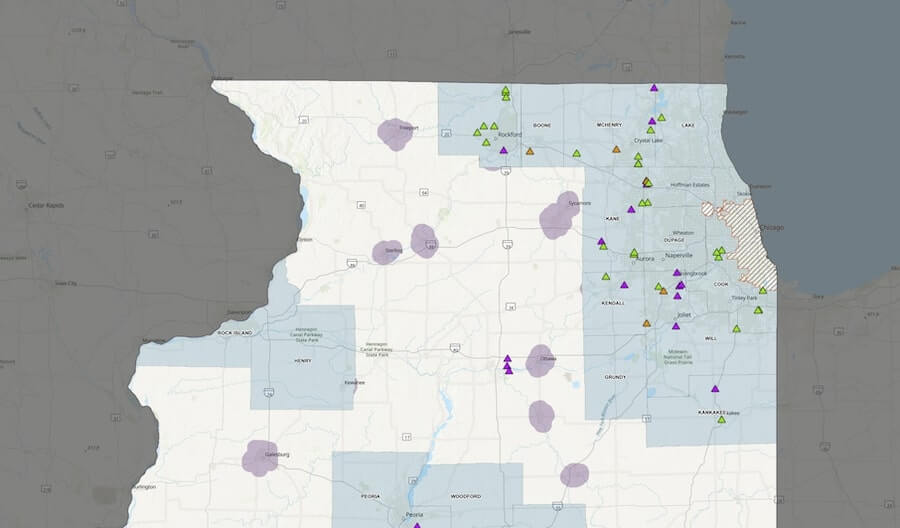Questions?
Talk to a scientist for a no-obligation consultation!
Call Us: (888) 405-1742
What is the process of Clean Construction Demolition Debris (CCDD) Testing?
Contact Us
Contact us with an address or GPS coordinates for your debris pile. We'll be out right away, even inside 24 hours if you need.
Sample & Laboratory
We'll take sample, have it analyzed and the data we receive will inform how we fill out the paperwork.
Certification
Depending on how the results come back from the laboratory, we will fill out the proper paperwork so we can get your debris to the appropriate and legal ultimate destination.
Haul & Dispose
If you'd like, we can arrange for a hauler to come get your pile of debris and get it over to the landfill.
Frequently Asked Questions About Clean Construction Demolition Debris (CCDD)
What Does CCDD Mean?
Clean Construction Demolition Debris is also known by its acronym, CCDD. It’s a regulatory program by the State of Illinois Environmental Protection Agency (IEPA) whereby a Professional Engineer (P.E.) or Professional Geologist (P.G.) certifies soil and/or construction demolition debris as “clean fill material.” The certification allows the CCDD Material to be disposed of at an IEPA permitted CCDD facility.
IEPA permitted CCDD facilities primarily consist of former quarries and are permitted to accept clean fill which is certified as CCDD material. This is an economical way to safely dispose of clean fill, which is not your standard household waste stream landfill or materials categorized as Subtitle D material. These former quarries are not lined; therefore, any material being disposed of within them has to meet the CCDD criterial in order to prevent surrounding soil and groundwater contamination.
“Subtitle D” Landfills in Illinois are permitted by the IEPA to accept certain waste streams such as contaminated soils. Soils that do not meet the CCDD criteria and need to be disposed of are disposed of at these Subtitle D Landfills. Additionally, if your property is a remediation site under the IEPA than your soils have to be disposed of at a Subtitle D Landfill as they are not able to be accepted at a CCDD facility.
That’s where we come in. A3E will sample your fill and if it meets the CCDD criteria, will certify it as clean fill. We will fill out the forms and if needed we’ll even coordinate with the trucking company for disposal at the CCDD facility.
Who needs CCDD Testing?
Government public works departments, real estate developers, construction and demolition contractors all may need to dispose of materials on their sites as CCDD material if they operate in Illinois.
What’s the Process for a CCDD?
It starts with a phone call or email to our customer service line. We will need an address of where the material is located. We will perform a historical study and then come out quickly, take appropriate samples and have them analyzed. If the results show the soil meets the CCDD criteria, we’ll prepare the forms for you to dispose of your material at a CCDD facility. If it does not meet the CCDD criteria, we will work with a Subtitle D Landfill to prepare a waste profile. We can even arrange to have it hauled away.
What’s the Report for a CCDD?
There are two primary forms to be completed.
The first one is known as an owner certification form known as LPC-662. If your property is historically residential or undeveloped, this form can be utilized along with a historical study proving its history and the collection of a pH sample.
The second form is a Professional Certification form know as an LPC-663. If your property has been utilized for any commercial or industrial use or the origin of the soils is unknown. A P.G. or P.E. will perform a historical study and collect soil a sample or samples that meet the criteria of your property for analysis. If the soils meet the CCDD criteria, then the soils to be disposed of will be certified as CCDD material with the LPC-663.
If there’s paint on your construction demolition debris, you’ll need LPC-667. These materials will be assessed on a case by case basis based on the age of the material and prior use of the site.
What else do I need to know?
Surprisingly, there's a wealth of very understandable information at the Illinois Environmental Protection Agency regarding CCDD.
A3 Environmental Consultants
All General Inquiries: Info@A3E.com
HQ: 3030 Warrenville Rd. Suite 418, Lisle, IL 60532














































